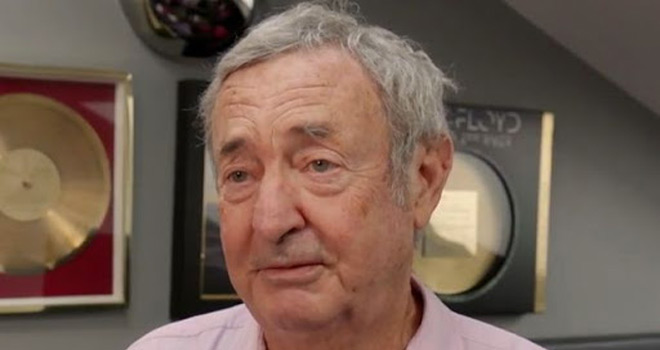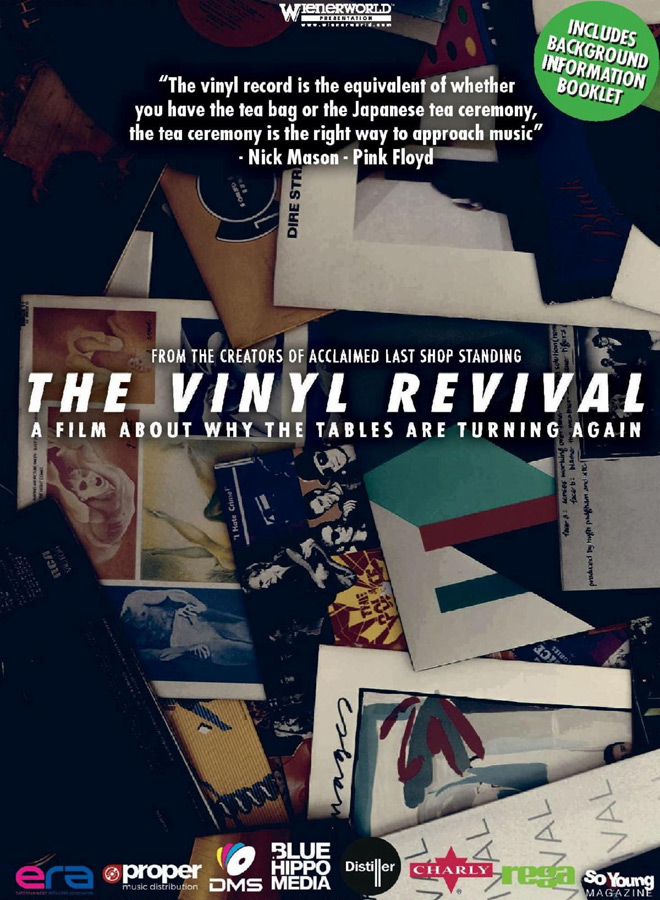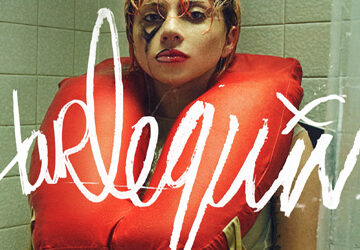
DVDs have lasted longer than their VHS forebears, and are still more widespread than their Blu-Ray successors. However, vinyl records are a rare case of a passé format coming back from the dead in style. No longer is it the refuge for the biggest audiophiles, old school DJs, and movie trailer foley artists. Now, perhaps for the first time in decades, it is another way to get hold of the latest tracks from some of the top names in music. At least for another few years or so.
Directed by Pip Piper (The Insatiable Moon 2010, Off Grid 2019), comes a new documentary by the name of The Vinyl Revival which talks about the importance of the medium. Arriving on on DVD on April 10th via Wienerworld UK, it features interviews with Pink Floyd’s Phil Mason, Radiohead’s Philip Selway, Portishead’s Ade Utley, as well as a brace of passionate record shop owners and music lovers talking about why vinyl matters, how it rose back to prominence, how long it will last and what the future will hold for the revived records. It even comes with a making-of booklet! It might be worth watching whether it is top-notch or bog-standard either way. Why? Because the documentary runs at a svelte 43 minutes. That is about the same length of time as the average TV documentary.
It helps that it acts as a sort-of sequel to 2012’s Last Shop Standing, Piper’s previous documentary about the last few record shops struggling to make a profit before vinyl re-boomed. They share the same approach of going across the UK and talking to store owners and musicians about records, only Last Shop Standing is the dark precis to Vinyl Revival’s happy ending. So, you could watch them back-to-back and get a beefier feature.
That said, Vinyl Revival does a brief call-back to it that serves as a decent if brief link. The big focus is on the appeal of vinyl itself and what it offers over other media. For some, the appeal is more intangible and emotional – the feeling of holding the music in their hands in a physical form. For others it is down to the extras that fall by the wayside for its digital equivalents; artistic album covers that would otherwise be reduced to thumbnail icons, interior design that could add to the album’s message or story, liner notes, etc.
One of many other angles is that its less hi-tech approach to music is the appeal. With MP3s and Spotify, one finds a track they like, they click it and listen to it. It is quick and efficient, maybe even more cost-effective. By contrast, vinyl records have to be bought at a record shop, which has that human touch. One will get music recommendations from the store owners, staff or fellow customers instead of an algorithm. That social aspect becomes an advantage when one may otherwise feel isolated or dictated to by data.
These are not just boomer talking points either, but viewpoints from across a range of generations. Boomers, Gen Xrs, Millennials and Gen Y all get to contribute. There is even a brief section where rising Manchester band Cassia and their producers talk about entering the vinyl market. That is not to mention the advantage of going for independent record stores over big chains like HMV, etc. It helps that they have gotten more numerous thanks to the revival.
Still, this is a largely Brit-centric picture. There are some American interviewees (Dr Jennifer Otter-Bickerdike is particularly spirited), though they and the other interviewees talk about vinyl in general or in relation to the British market. What might be true for one territory might not be so for another, but there is not really time in its 43-minute length to cover worldwide markets.
Nonetheless, The Vinyl Revival is still quite interesting as it is and covers plenty of ground in its runtime. It will serve anyone looking for a quick, breezy guide to the vinyl boom, especially if they are based in the UK. Though if one is after anything meatier, they will either have to watch it with Last Shop Standing, read the book of the same name by author and interviewee Graham Jones, or look elsewhere. Thus, for these reasons, Cryptic Rock gives The Vinyl Revival 3.5 out of 5 stars.





